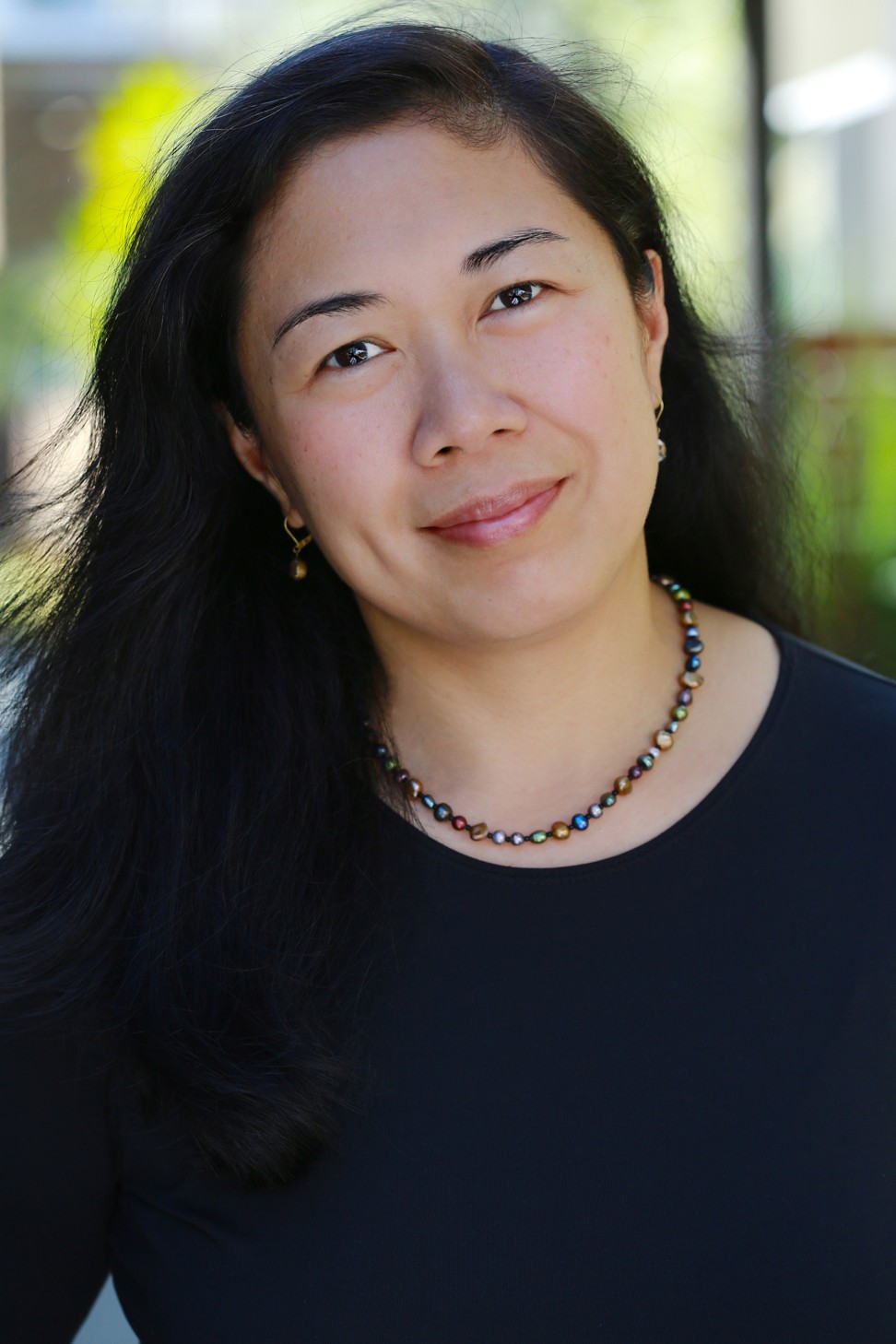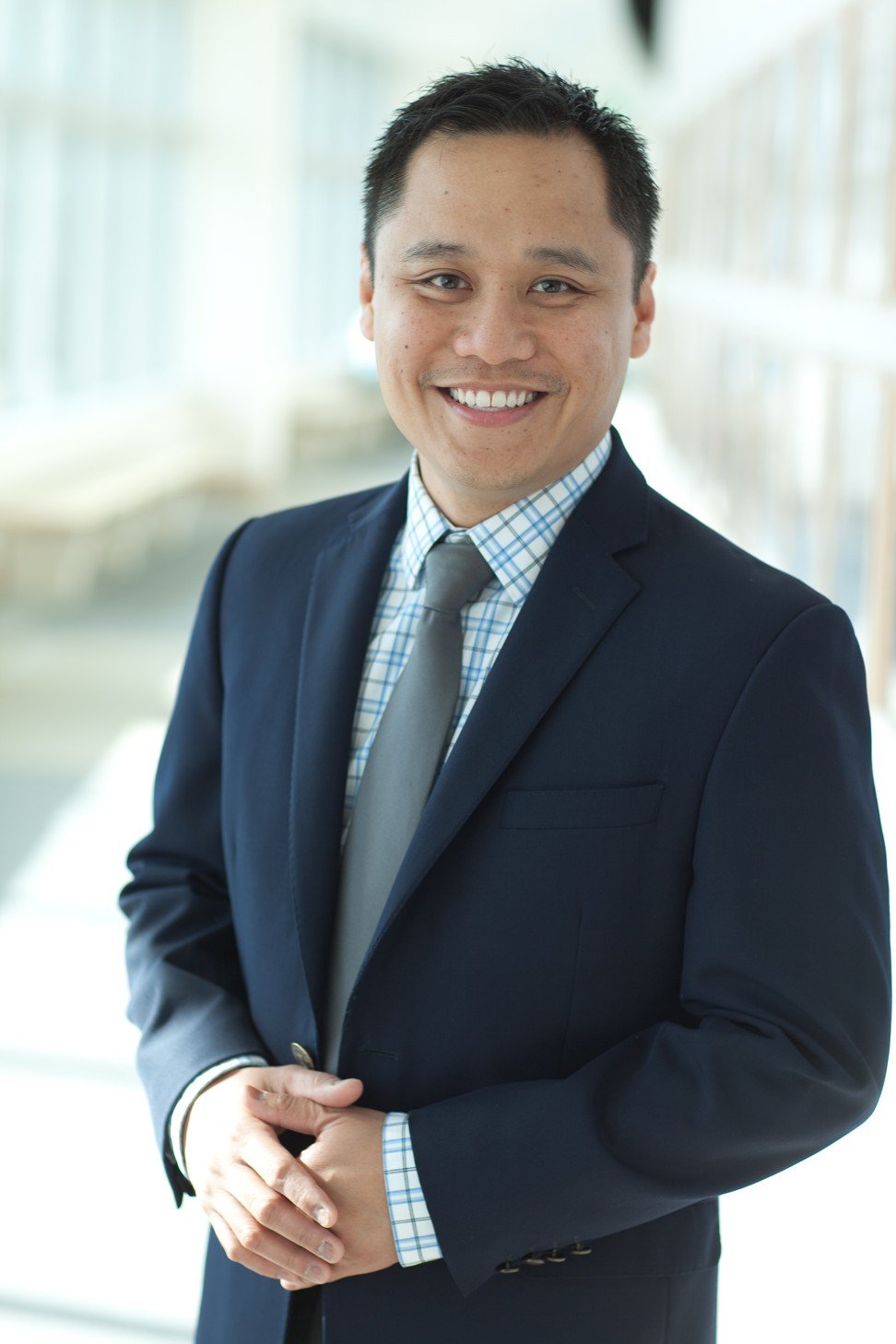With the existing workforce ageing, a historic shortfall looming and Trump limiting immigration, the system’s best hope lies with the nurses themselves
Charley Lanyon 2 Feb, 2020
There is a moment in Jo Koy’s 2012 stand-up special, Lights Out, when he asks the California crowd how many of them are Filipino. What sounds like most of the audience applauds. “Somewhere in Glendale …” the Filipino-American comedian quips of the Los Angeles suburb, “there’s an empty hospital.” The theatre explodes with laughter.
Every Californian – or at least those who have ever been sick – would get the joke. Like good Mexican food or being allowed to make a right turn on red, depending on the expert care of Filipino nurses is something of a Californian birthright.
Filipinos account for less than 4 per cent of the state’s population but 20 per cent of its registered nurses. Like so many American immigration stories, theirs is one of colonialism, racism, war and sacrifice; and it’s one many Americans seem to have forgotten.
United States President Donald Trump swept into office on a wave of anti-immigrant sentiment and is actively retooling the immigration process to make it as difficult and unpleasant as possible for applicants, including medical professionals. And yet hospitals are short-staffed, health care costs are ballooning and 44 million US citizens have no health insurance.
Californians of every political stripe face a stark truth: hospitals need immigrants, especially those from the Philippines, more than ever. Without them, American health care, for all its glaring flaws, would cease to exist.
What began as a way to educate so-called ambassadors in the US to send back to the Philippines was exploited as a way to shore up an American nurse shortageCatherine Ceniza Choy, professor of ethnic studies, University of California, Berkeley
Hope lies, at least in part, with the Filipino workers themselves, who are stepping up and assuming positions of power in unions, colleges and on hospital boards, and driving the conversation around American nursing and health care. And not just in California.
But while Filipino nurses are finding their voices and exercising their power, they are also ageing. There are more than a million nurses in the US over the age of 50, which means one-third of the workforce will reach retirement age in the next 10 to 15 years. Without comprehensive immigration changes that encourage more foreign health care workers to settle in the US, the country is set to learn a hard lesson about how dependent it has become on immigrants for its most vital – literally life-sustaining – needs.
All eyes are on this year’s presidential election and carers, health care advocates and political action groups representing nurses are pushing hard for immigration and health care reform before it’s too late.
Catherine Ceniza Choy, a professor of ethnic studies at the University of California, Berkeley, is author of the book Empire of Care: Nursing and Migration in Filipino American History (2003), which starts at the end of the 19th century, when the Philippines had the misfortune of being one of America’s first forays into colonialism.
The complex ties between mothers and their domestic helpers

Why are there so many Filipino nurses? Son of US nurse digs into history

Despite powering global trade, Filipino seamen face growing threats
First claimed by Spain in 1521,
the Philippines – the only Asian country named after a European monarch – would spend more than 300 years under Spanish rule. Just as independence seemed at hand, on the eve of Spain’s defeat in the Spanish-American war, in 1898, the European country ceded the archipelago to the US, giving it one of its first overseas territories.
“When the US colonised the Philippines, the US government introduced formal nursing education because they wanted their soldiers taken care of,” says Leo-Felix Jurado, a professor in the department of nursing at William Paterson University, in New Jersey, and executive director of the Philippine Nurses Association of America (PNAA). “As a result, the Philippine educational system was very much a US educational system.”
Choy puts it more bluntly: “The message was, you’re not civilised, we’re going to civilise you.”

Filipino student nurses watch a surgery being performed at Manila’s Philippine General Hospital, circa 1915.
In the first decades of the 20th century, this educational link became increasingly formalised and groups of vetted, upper-class Filipinos called pensionados, or “students on a pension”, were awarded scholarships to travel to the US to study health care.
“The idea was that they would [return to the Philippines to] occupy positions in education, hospitals and the colonial government,” Choy says. “It established a mindset that, if you are going to be socially, economically mobile and gain professional opportunities in the Philippines, one great way to do that is to study in the US.”
While no longer a colony after World War II, ties between the US and the Philippines remained strong. In 1948, the US Congress passed the Information and Education Exchange Act, establishing an exchange visitor programme (EVP) and opening up the “nursing pipeline”.
“What began as a way to educate so-called ambassadors in the US to send back to the Philippines was exploited as a way to shore up an American nurse shortage,” Choy says. “There were even American hospitals putting ads in Philippine newspapers advertising job opportunities.”
So began a pattern: first the EVP, then the 1965 Immigration and Nationality Act and the 1989 Immigration Nursing Relief Act and, most recently, in the noughties, “visa compromises” removing limits on the number of nurses that could enter the US and work. Whenever the US faces a nursing shortage, Congress passes immigration reform to entice Filipino immigrant nurses. “At the same time, when the US doesn’t need more nurses, they basically close the gate,” says Jurado, who has written a dissertation on the relationship between US immigration reform and overseas nurses.

Catherine Ceniza Choy, a professor of ethnic studies at the University of California, Berkeley.
In the Philippines, after
president Ferdinand Marcos declared martial law in 1972, he used his new powers to move towards a labour-export economy, actively encouraging his countrymen to find work overseas and send back money to help bolster the faltering economy. Those who did so were described by state propaganda as patriots, even “national heroes”.
It wasn’t hard to convince the nurses. Their quality of life in the Philippines still lags well behind that in the US, and medical technology, especially in public hospitals, can be antiquated. As for nurse’s salaries, the average in the Philippines is about US$700 a month, compared with around US$6,300 a month in America.
“When I graduated, I worked at the Philippine General Hospital, a public hospital [in Manila],” recalls Dahlia Tayag, a clinical nurse at the University of California’s San Diego Medical Centre, who came to the US in 1983. “We didn’t have health insurance in the Philippines at that time. If you couldn’t afford your medical care, you were just going to die. If a patient needed a blood transfusion and had no money, I would take up a collection from my co-workers to buy blood.”
Filipinos say they are taught at a young age to prioritise the good of the group over the individual, to work hard and to respect authority – all essential values in the high-pressure, hierarchical world of nursing. Faith is also a central pillar for many Filipinos and the core values of Catholicism, such as service and care for the less fortunate, are taken to heart and actively practised.
“Filipinos as a whole are very compassionate, very caring people,” says Zenei Cortez, a Filipino-American nurse and president of National Nurses United, the country’s largest nurses’ union. “We have utmost respect for our elders. There’s a saying that every Filipino is related. We call someone else’s mother ‘mother’, someone’s aunt ‘aunt’. We treat our patients like they are our own family and that’s what I think makes Filipinos the best caregivers.”

Dahlia Tayag, a clinical nurse at the University of California’s San Diego Medical Centre.
In Philippine hospitals, there are no visiting hours, and family members are allowed, even expected, to be with the patient at all times. This inclusion in care is a tenet Filipinos bring with them, and American medical workers and administrators are slowly realising its efficacy in the healing process.
“Now hospitals in the US are trying to adopt that kind of Filipino practice,” Jurado says. “We’re seeing a trend towards getting rid of limitations on visiting hours and making sure family members are involved in decision making.”
In America, thanks to legal and liability issues, it can be impossible for students to get on-the-job experience, so Tayag is part of an initiative to take US-trained nursing students to the Philippines. There, “students get full hands-on care experience”, she says. “You can’t even compare it. When we graduate from nursing school over there, we are ready to work.”
Adjusting to American hospitals can be difficult, however. First there is a language barrier – high-speed medical English can be hard for even fluent English-speaking Filipinos – and there is new technology to learn, and a foreign work culture to navigate.
Marlon Saria, an oncology clinical nurse specialist at Providence Saint John’s Health Centre, in Los Angeles, says even applying for jobs in the US is dauntingly different. “In the Philippines, we don’t email. We don’t apply online. I did not know all these things were possible here. So I was driving to every hospital, trying to apply on paper to each of the human resources offices.”
As a Filipino, in spite of being educated and trained here in America, I have to work a little harder than my colleagues and counterparts. You have to constantly prove yourselfZenei Cortez, president, National Nurses United
When he did secure a job – thanks to a Filipino hiring manager who understood his situation – he still felt out of his depth. “All I could say at that time was, ‘Can you repeat that, please?’ Like, ‘Excuse me?’ I could not understand what people were saying, so I would hate to pick up the phone,” Saria recalls. A well-meaning patient even taught him how to pronounce “insulin” correctly.
“The first six months were really rough because the culture is very different: the paternalistic doctor culture in the Philippines versus here, where you can actually talk back to your boss,” Saria remembers. “And in California, everything was automated; you have IV [intravenous] pumps, you have automated blood pressure machines. Everything in the Philippines is still manual.”
Many Filipino nurses also face racial discrimination, and while the work environment is improving, especially in states and cities with large immigrant populations, many nurses feel they are judged by different standards to their white counterparts.
“I’ve found that, as a Filipino, in spite of being educated and trained here in America, I have to work a little harder than my colleagues and counterparts. You have to constantly prove yourself,” says Cortez, who has seen blatant discrimination first hand. She recalls applying for a nursing job in the 1990s. “The manager told me – and this is word for word – that she cannot hire another Filipino in the department because there were already way too many. I was so dumbfounded. Then I got p***ed off. I knew my rights. That’s how I got involved in the union, because with their backing I was able to win the position,” she says.
Like her, today many Filipino nurses are demanding more: including a voice in determining their futures and the future of their profession. As well as bedside nurses, Filipinos are taking on faculty jobs at university medical departments, leadership roles in unions and hospital administrations, spearheading research, writing policy and even editing the textbooks used to teach the next generation of nurses.
Why has it been so hard for Filipinos to break the bamboo ceiling? The phrase ‘impostor syndrome’ comes up a lotMarlon Saria, oncology clinical nurse specialist
The PNAA, which last year celebrated its 40th birthday, has 52 chapters across the US. “Many of its leaders are administrators, such as chief nursing officers in big hospitals; deans and professors of colleges of nursing; researchers, entrepreneurs and many advanced practice nurses,” Jurado says.
“There are two tracks of so-called power,” says Cortez. “We have a lot of Filipino nurses going for higher education because they want to be in management, then there’s another group seeking higher education because they want to excel as direct-care frontline nurses. In both cases, it’s because we want to make a difference and uplift the profession of nursing. I hope to inspire the Filipino nurses: if you speak the truth and you are advocating for what is right for our profession, and fighting for what we need to take care of our patients, we can accomplish anything.”
Still, the cultural and professional values that make them such good nurses have also made their fight for power and representation slow-going.
“Why has it been so hard for Filipinos to break the bamboo ceiling?” Saria asks. “The phrase ‘impostor syndrome’ comes up a lot.”
“If something is said by someone [further] up in the hierarchy, we tend not to answer back because in our culture the elders are always right,” Cortez says. “But it’s changing, a new wave is coming.”
In California at least, that wave has arrived. The nurse-to-patient ratio law, enacted in 2004, has drastically improved the lives of nurses and patients alike. Unique to California – that the only state to pass such a law is also the state with the most Filipino nurses is lost on no one – it requires that there must be one nurse for every five patients in the general population, and one nurse for every two patients in intensive care.

Marlon Saria, an oncology clinical nurse specialist at Providence Saint John’s Health Centre, in Los Angeles.
The law was intended to improve the quality of care for patients, which it does, but it has also increased nurse employment by almost 15 per cent since 2004, andimproved the safety and quality of life for hospital nurses by radically decreasing burnout and exhaustion. One study from the Economic Policy Institute, a non-profit think tank based in Washington, showed the law reduced nurse injuries by more than 30 per cent.
“A lot of the energy to get it passed was from nurses, and the majority of nurses here in California are Filipinos,” says Cortez. “It was a lot of work and a lot of convincing that I personally had to do. Going to Filipinos and telling them we always need to keep our eye on the prize because it’s just a matter of time and we will win it, and we did win the ratio after more than a decade of fighting.”
Despite so many hard-fought successes, Filipino-American hospital staff are facing their biggest challenge yet: an ageing population of carers, in a country that lacks the political will to shore up its looming nursing shortfalls with increased immigration, as it has always done in the past.
Meanwhile, Trump has claimed to have a “great relationship” with the Philippines, then referred to impoverished, labour-exporting nations as “s***hole countries” and portrayed immigrants as murderers and job-stealers, not lifesavers and healers. His idea of reform is to strictly limit the number of immigrants and make the already labyrinthine legal process even more complicated.
“It would be really, really bad for health care in America if the country turned its back on immigrants,” Tayag says. “Hospitals and other health care agencies are filled with immigrants. If they limit that and there’s not enough people going into the field of nursing, it would be a disaster for our patients. There would be no one to take care of them.”
If Americans have learned one thing in the past century, it is that when it comes to health, the wisest thing they can do is include Filipinos in the conversation.
“If you’re not at the table,” says Saria, across his work-crammed desk in the hospital, “you’re on the menu.”
---30---
No comments:
Post a Comment